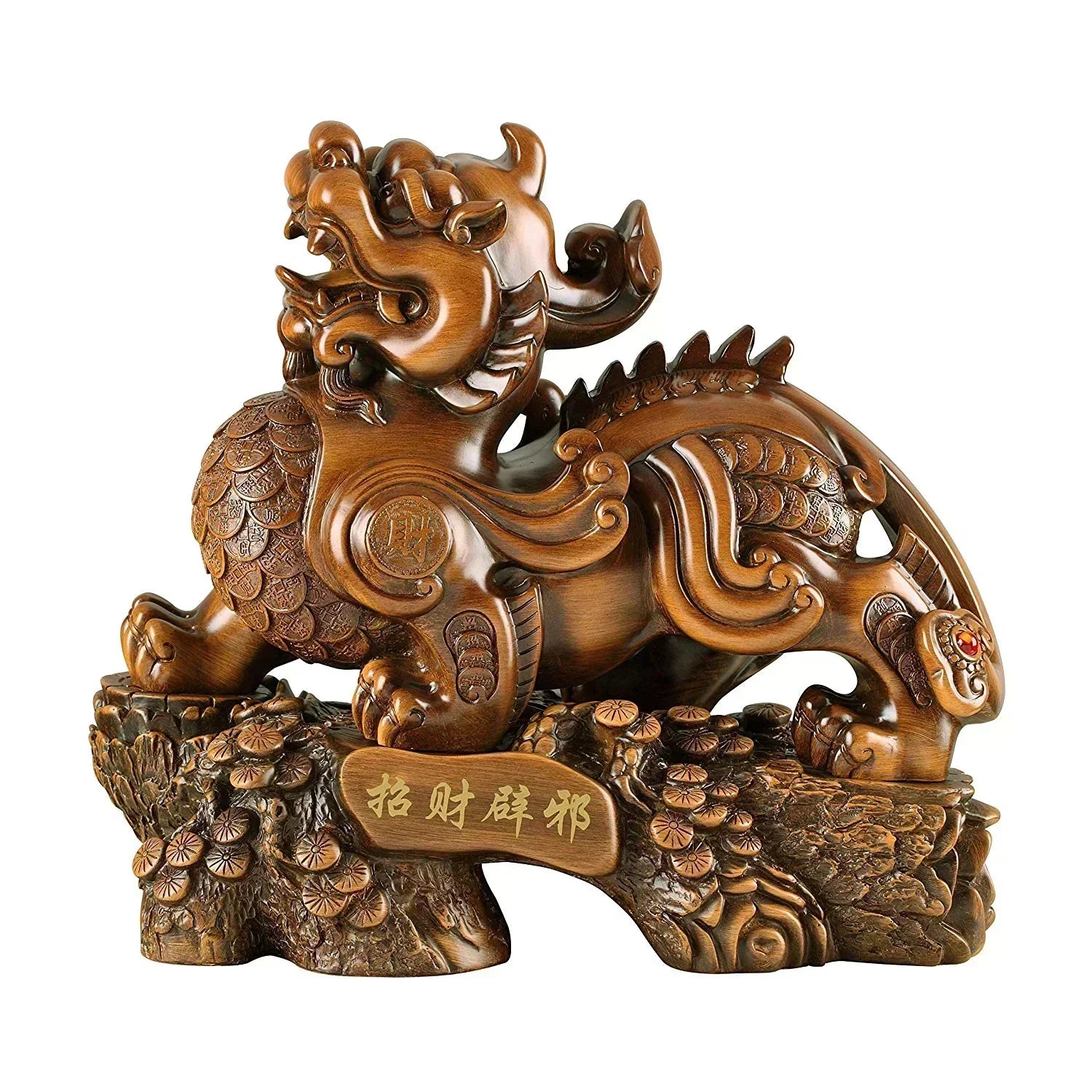Pixiu, the mythical Chinese creature with a dragon’s head, lion’s body, and insatiable appetite for wealth, has been revered for millennia as a guardian of prosperity. While its modern popularity as a bracelet charm is undeniable, the earliest textual and cultural roots of Pixiu’s association with wealth trace back to ancient Chinese literature and dynastic records. This article delves into the historical texts that first immortalized Pixiu as a protector of riches and how its symbolism evolved into the iconic bracelets worn today.
1. Mythological Foundations: Shan Hai Jing and Han Dynasty Lore
The earliest written references to Pixiu appear in Shan Hai Jing (The Classic of Mountains and Seas), a Warring States Period (475–221 BCE) compilation of mythic geography and creatures. Though not explicitly describing bracelets, this text lays the groundwork for Pixiu’s identity as a divine beast. It portrays Pixiu as a celestial guardian with the power to repel evil and attract treasures, a theme later expanded in Han Dynasty (206 BCE–220 CE) records.
Han-era texts, such as historical chronicles and ceremonial manuals, further codified Pixiu’s role. For example, Han Shu (Book of Han) references “Pi” and “Xiu” as separate auspicious creatures linked to military victory and imperial authority. By the Eastern Han period, Pixiu’s hybrid form—combining dragon, lion, and qilin features—became associated with wealth accumulation, partly due to legends about its sealed anatomy preventing financial loss.

2. Tang to Ming Dynasties: Ritual Objects and Symbolic Adornments
During the Tang Dynasty (618–907 CE), Pixiu’s imagery began appearing on functional and decorative items, including hairpins, belt buckles, and ceremonial vessels. While bracelets specifically are not mentioned in surviving Tang texts, Buddhist sutras and Daoist talismans from this era describe Pixiu motifs as protective emblems for royalty and elites.By the Ming Dynasty (1368–1644), Pixiu’s symbolism crystallized in material culture. Ming scholar-officials documented its use in jade carvings and metalwork, often worn as pendants or incorporated into jewelry. The Ming Shi Lu (Veritable Records of the Ming) notes that Pixiu amulets were gifted to merchants and officials to “ward off misfortune and invite gold.” This period likely saw the earliest iterations of wrist-worn Pixiu charms, though explicit references to “bracelets” remain scarce.
3. Qing Dynasty: The Rise of Pixiu Bracelets in Text and Practice
The Qing Dynasty (1644–1912) marked a turning point. Imperial archives and folk records from this era provide clearer evidence of Pixiu bracelets as wealth guardians. Emperor Qianlong (1735–1796), a fervent collector of ancient jades, commissioned Pixiu-themed jewelry, including bracelets, to symbolize his reign’s prosperity. His court poets and scholars wrote extensively about these artifacts, linking them to Confucian ideals of harmony and abundance.
Feng shui manuals from the late Qing, such as Yangzhai Biao Zhun (Standards for Residential Geomancy), prescribed wearing Pixiu bracelets on the left wrist to “channel celestial wealth energy.” These texts emphasized the creature’s sealed mouth and anus—rooted in Han mythology—as metaphors for retaining financial luck.
4. Modern Interpretations and Cultural Continuity
Today’s Pixiu bracelets draw direct inspiration from Qing-era designs, but their legitimacy as wealth talismans is anchored in ancient textual traditions. For instance:
Material Symbolism: Jade Pixiu bracelets, popularized in the Han Dynasty, reflect Confucian values of purity and permanence.
Directional Lore: Positioning the bracelet’s Pixiu head outward references Tang-era geomantic principles for “harvesting external fortune.”
Ritual Activation: Cleansing rituals described in Qing manuals, such as moonlight bathing or incense smoke purification, remain standard practice.
5. Key Ancient Texts and Their Legacy
The following works are pivotal to understanding Pixiu’s journey from myth to bracelet charm:
Shan Hai Jing(Warring States Period): Establishes Pixiu’s divine lineage and protective nature.
Han Shu(Han Dynasty): Links Pixiu to imperial authority and financial stewardship.
Tiangong Kaiwu (Ming Dynasty): Details jade-carving techniques for Pixiu amulets.
Qing Imperial Archives: Document court-commissioned Pixiu jewelry and their symbolic protocols
Conclusion
From its mythical debut in Shan Hai Jing to its Qing-era incarnation as a bracelet, Pixiu’s role as a wealth guardian has been meticulously documented across China’s literary and artistic history. Ancient texts not only validate its cultural significance but also provide a blueprint for modern practices, ensuring this celestial beast remains a timeless emblem of prosperity. For collectors and Feng shui enthusiasts, wearing a Pixiu bracelet is more than a fashion statement—it’s a dialogue with 2,000 years of spiritual and material wisdom.













